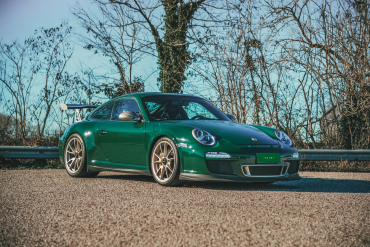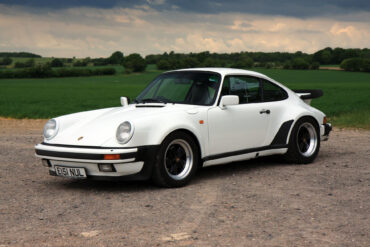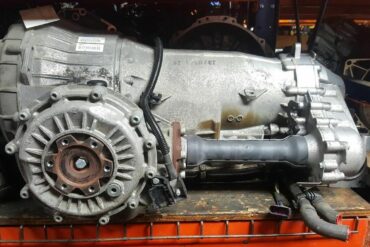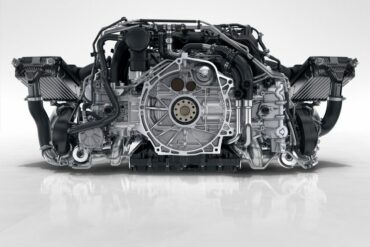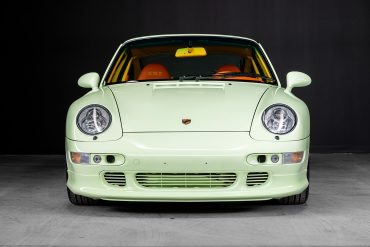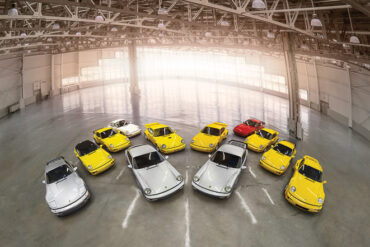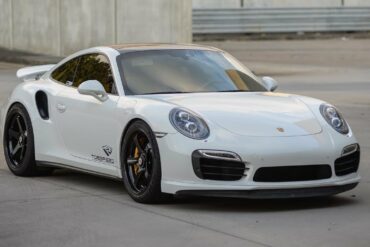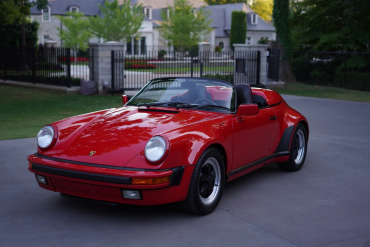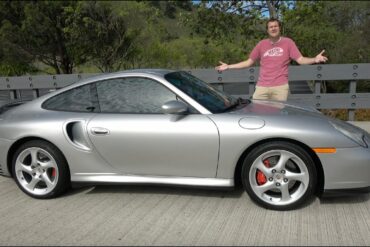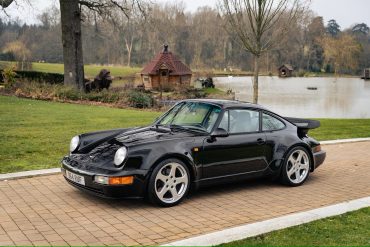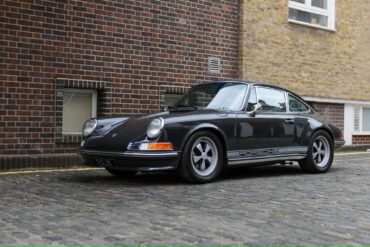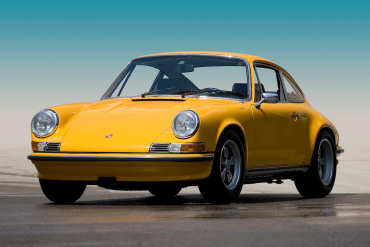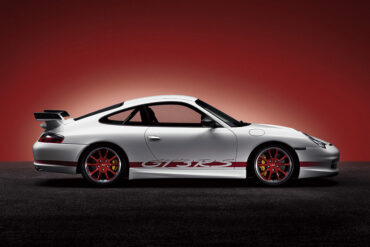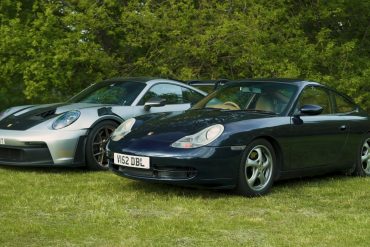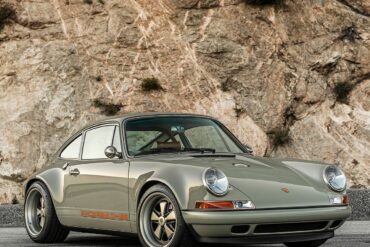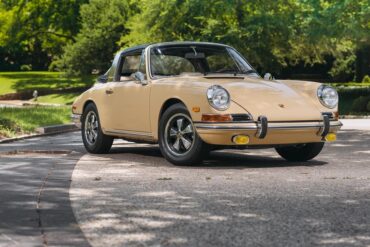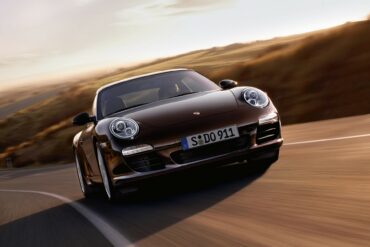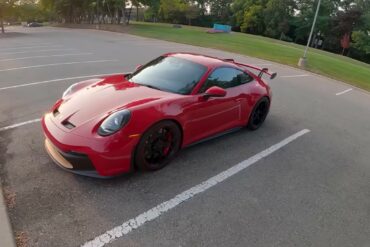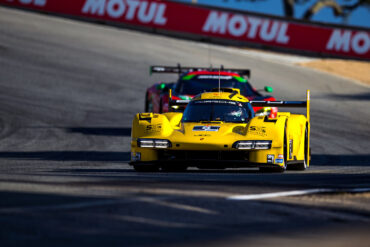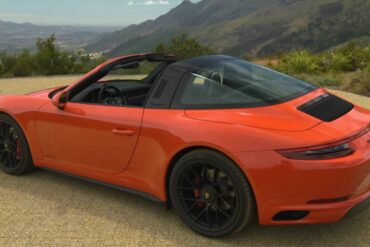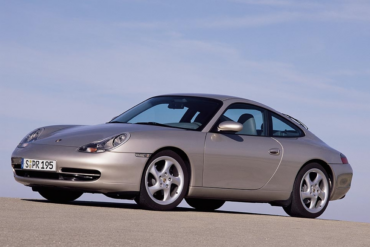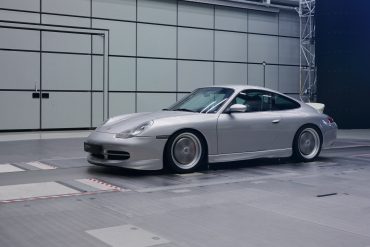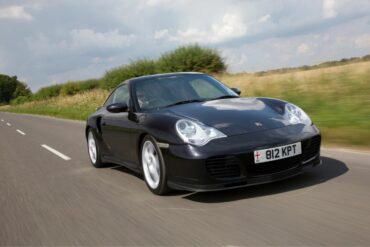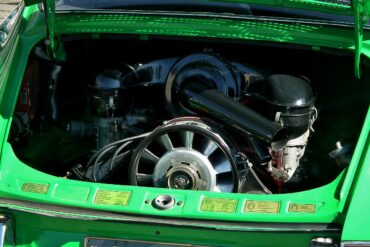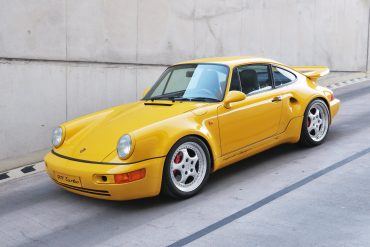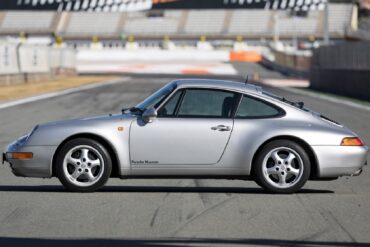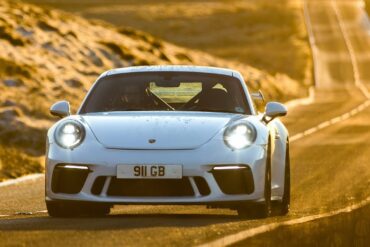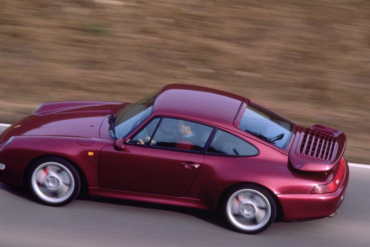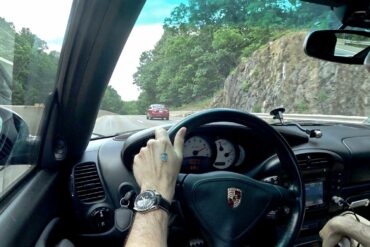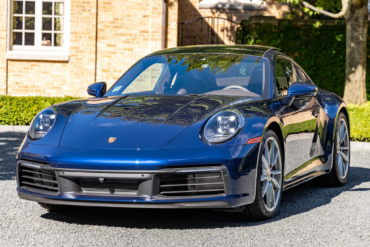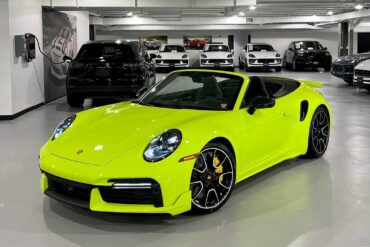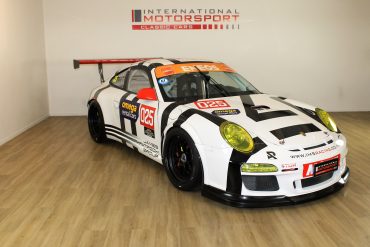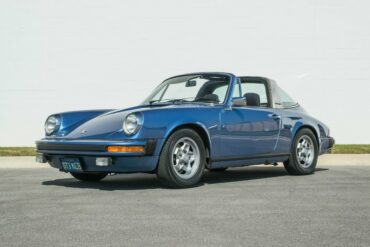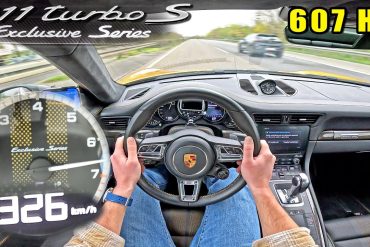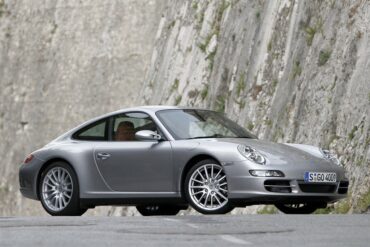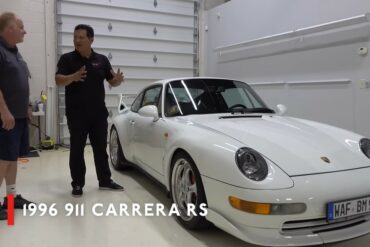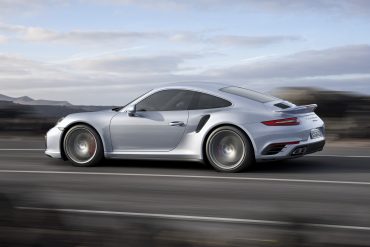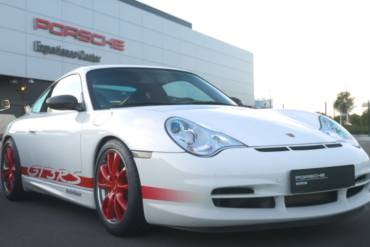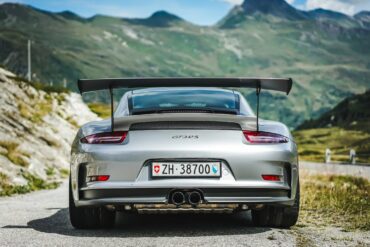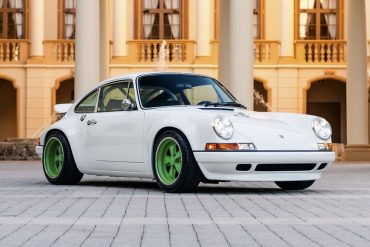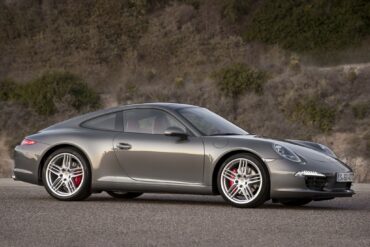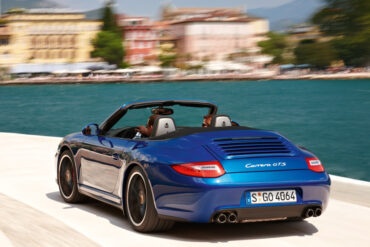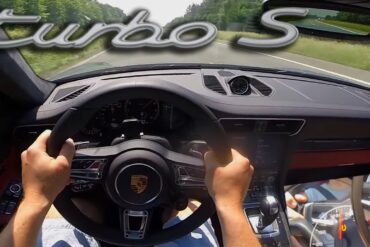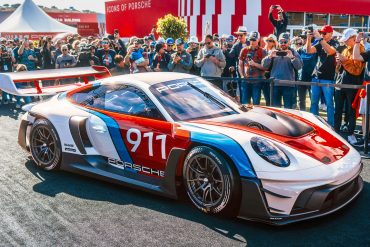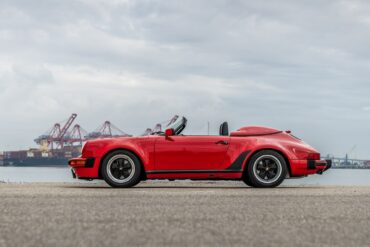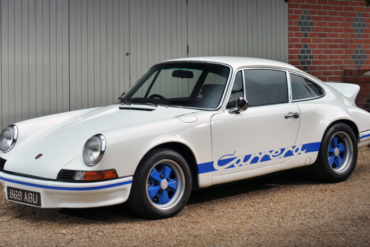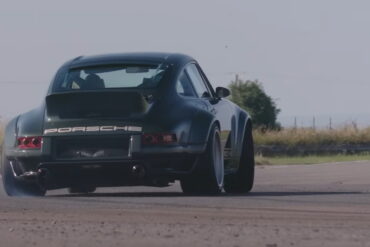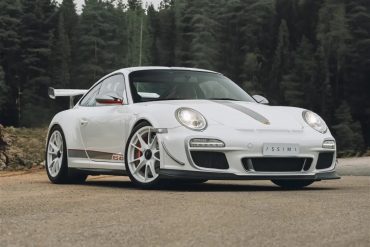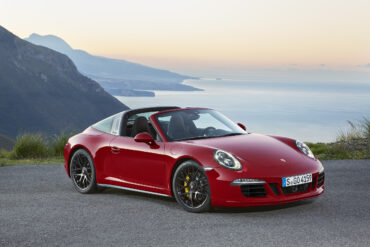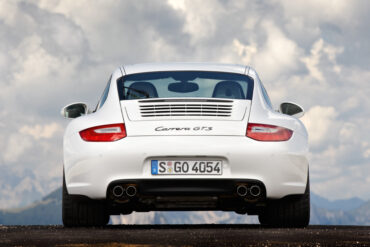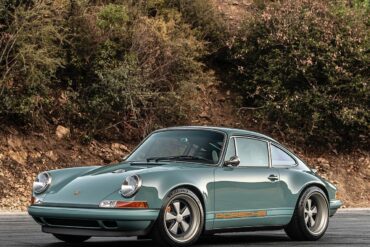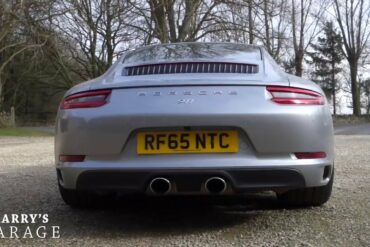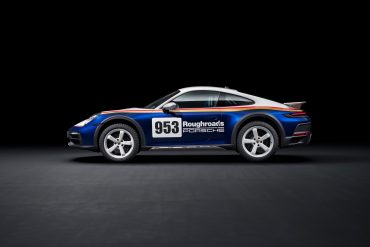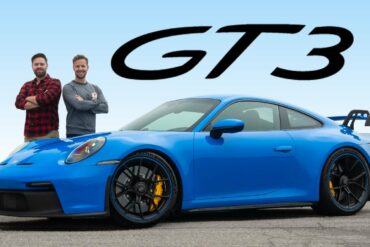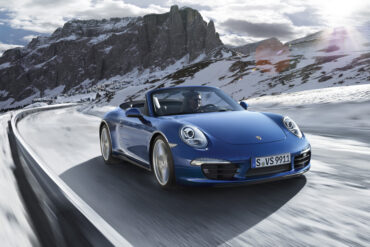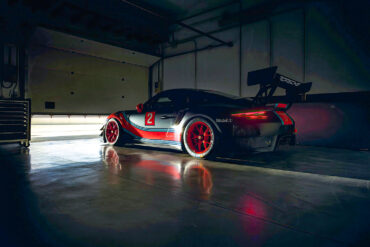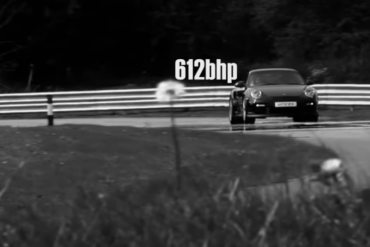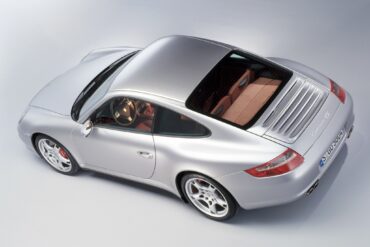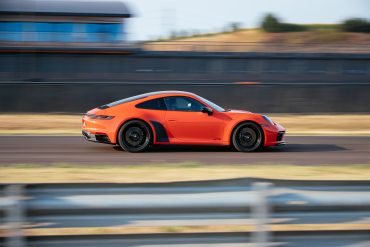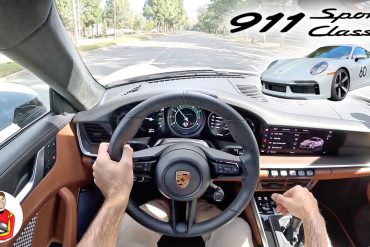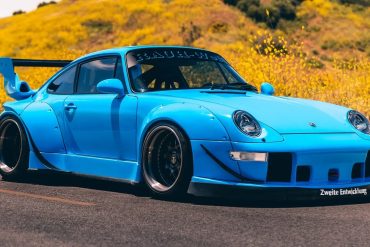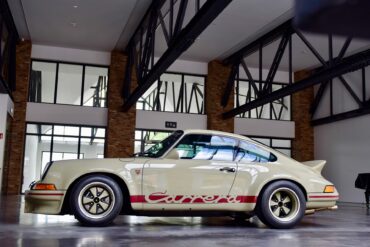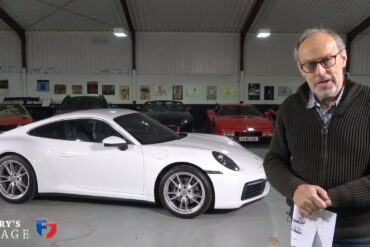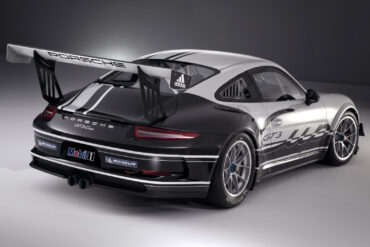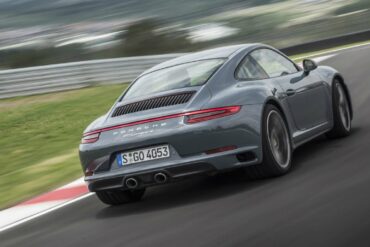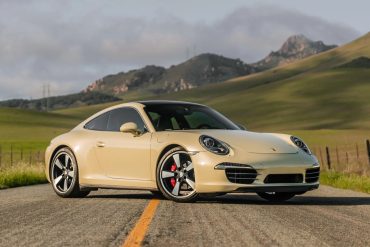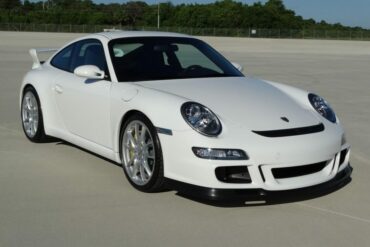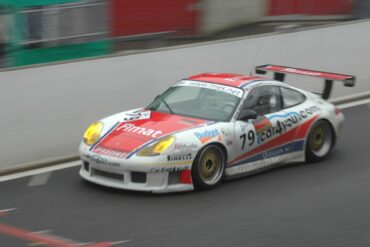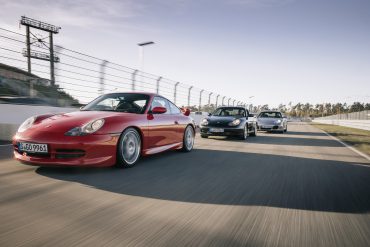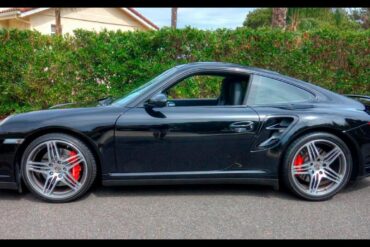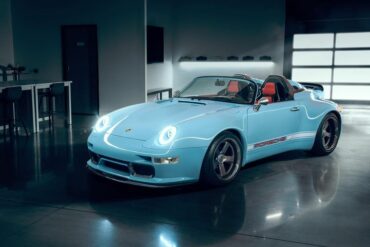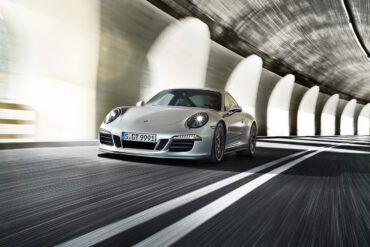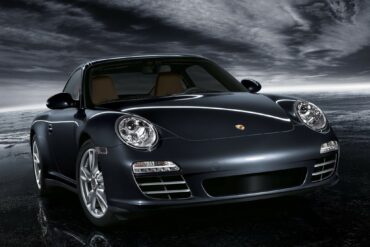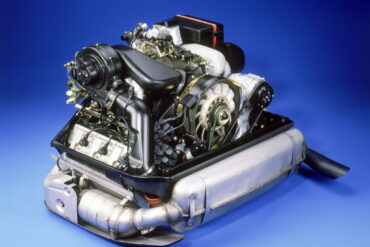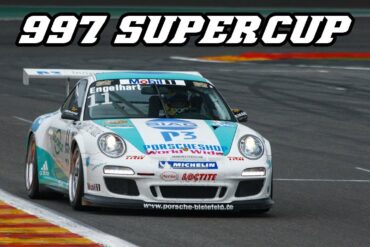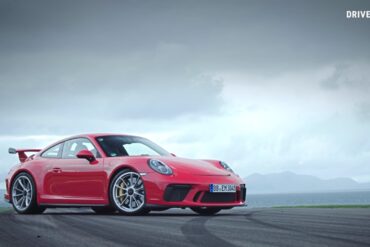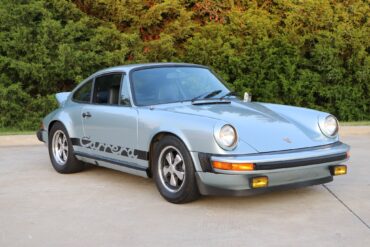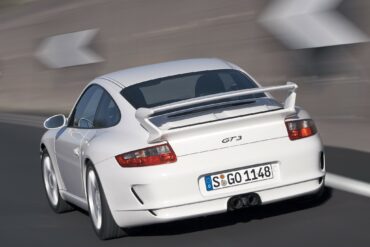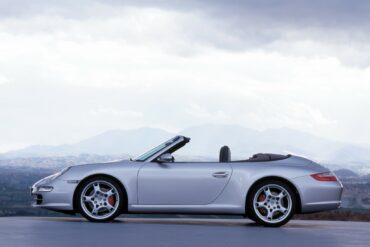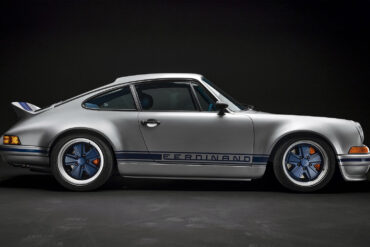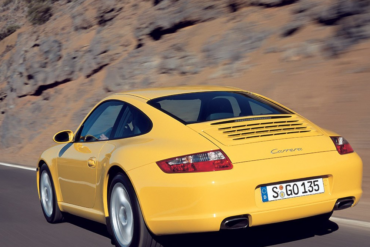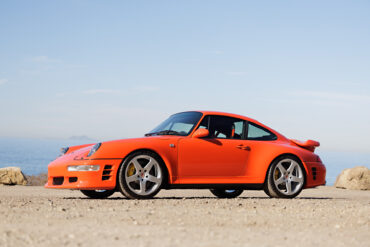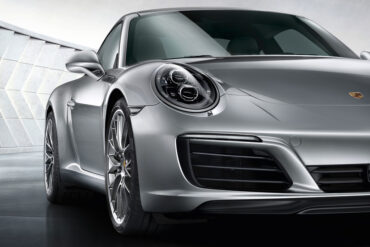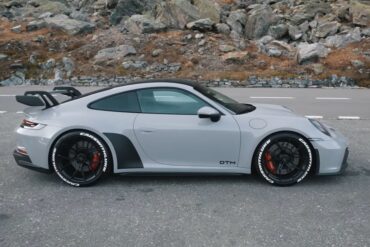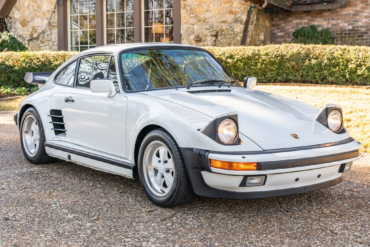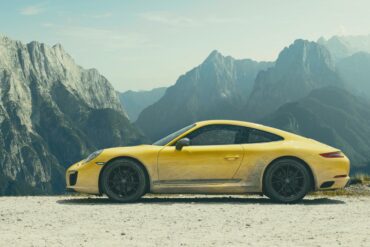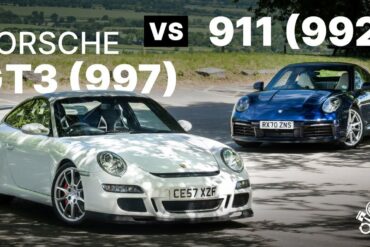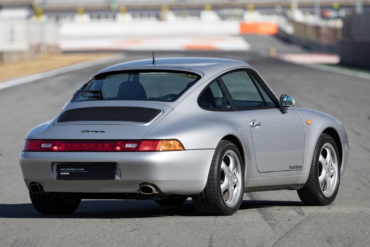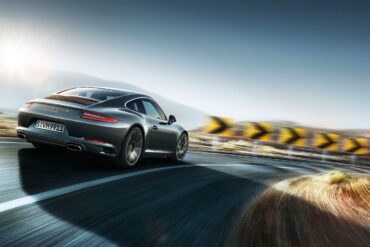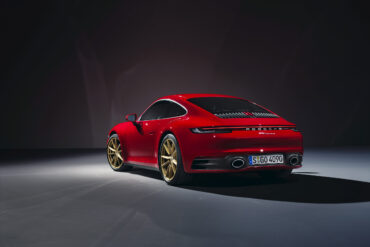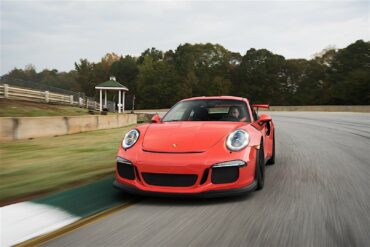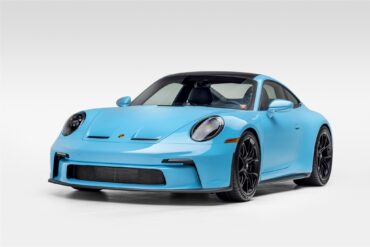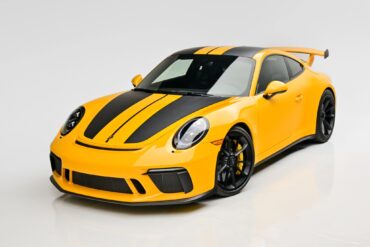Enjoy this video by Alex Hardt as he got the chance to test drive a Porsche 992 GT3 at Zandvoort...
Porsche 911
All
- Porsche 912
- 911 Carrera RS 2.7
- Porsche 901 (911)
- Porsche 911 (F-Series)
- Porsche 911 (991)
- Porsche 911 (G-Series)
- Porsche 911 (964)
- Porsche 911 (993)
- Porsche 911 (996)
- Porsche 911 (997)
- 911 Speedster Concept
- Porsche 911 (992)
- 964 Carrera 2
- 964 Carrera 4
- ’30 Jahre’ Anniversary
- 964 Speedster
- 964 Turbo
- 964 Carrera RS
- 964 Carrera Cup
- 964 RSR
- 993 Carrera
- 993 Carrera 4
- 911 Edition 50
- 993 Carrera 4S
- 911 2.0 Bertone Roadster
- 993 Carrera S
- 993 Targa
- 992 Sport Classic
- 993 Turbo
- 996 Carrera
- 993 Carrera RS
- 992 America Edition 911
- 996 Carrera 4
- 993 GT2
- 996 Targa
- 993 Carrera Cup
- 996 Carrera 4S
- 996 Turbo
- 996 Turbo S
- 996 GT3
- 996 GT3 RS
- 996 GT2
- 996 GT3 Cup
- 996 GT3 R
- 996 GT3 RSR
- 997 Carrera
- 996 GT3 RS Race
- 997 Carrera S
- 997 Carrera 4
- 997 Carrera 4S
- 997 Targa
- 911 Carrera 3.0 Coupe (G-Series)
- 997 Targa 4S
- 997 Turbo
- 997 Turbo S
- 997 GT2
- 992 Carrera T
- 997 GT2 RS
- 997 Speedster
- 997 Carrera GTS
- 992 Dakar
- 997 Carrera 4 GTS
- 997 GT3 Cup
- 997 GT3 R
- 997 GT3 RSR
- 997 GT3
- 997 GT3 RS
- 997 GT3 R Hybrid
- 991 Carrera
- 991 Carrera 4
- 991 Carrera S
- 991 Carrera 4S
- 991 Targa 4
- 991 Targa 4S
- 991 Turbo
- 991 Turbo S
- 991 Carrera GTS
- 991 Carrera 4 GTS
- 991 Targa 4 GTS
- 991 911 R
- Porsche 992 GT2 RS
- 991 GT3
- 991 GT3 RS
- 991 GT2 RS
- 991 Speedster
- 991 GT3 R
- 991 GT3 Cup
- 991 RSR
- 991 Carrera T
- 992 Carrera 2
- 992 Carrera 4
- 992 Carrera S
- 992 Carrera 4S
- 992 Targa 4
- 992 RSR
- 992 Targa 4S
- 992 Carrera GTS
- 992 Carrera 4 GTS
- 992 Targa 4 GTS
- 992 Turbo
- 992 GT3 R
- 992 Turbo S
- 992 GT3
- 992 GT3 Touring
- 992 911 S/T
- 911 (G-Series)
- 992 GT3 RS
- 992 GT2 RS
- 992 GT3 Cup
- 911 Carrera 3.0 (G-Series)
- 911 S (G-Series)
- 911 Carrera RSR 2.8
- 911 SC (G-Series)
- Porsche 992 GT3 R Rennsport
- 911 S/T
- 911 Carrera 3.2 (G-Series)
- 911 (Base Model)
- 911 Turbo (930)
- 911 SC Safari
- 911 L
- 911 Carrera RSR Turbo 2.1
- 911 T
- 911 Carrera RSR 3.0
- 911 E
- 911 S
- 911 SC San Remo
- 911 Carrera 3.2 Clubsport
- 911 R
- Porsche 953
- 911 Carrera RS 3.0
- 911 T/R
- 911 Carrera 25th Anniversary
- 911 SC RS
- 911 Turbo LE
- 911 Carrera Commemorative
- 911 Carrera 2.7 (G-Series)
- 911 3.2 Speedster
- 911 Turbo 2.7
- 964 Turbo S
Based on the already primal 997.2 GT3, the RS gets another 15 hp from the 3.8-liter flat-six for a total...
Porsche Option Codes – Porsche 911 (1988 Model Year) Looking to decode your 1988 Porsche 911 option codes? Want to...
Porsche 911 (996) Transmission Codes The transmission number code is found on the transmission data plate. Code Transmission Model years...
Porsche 911 (991) Engine Codes There are more versions of the 991 Carrera than you can shake a stick at!...
This 993-generation Porsche 911 Turbo S is the result when an unlimited budget accompanies extreme fantasy. There’s no other way...
RM Sotheby’s Amelia Island auction sale – Porsche 964 Collection Now in its 20th year, RM’s 2018 Amelia Island sale...
One Take In An Aftermarket Turbo S This video was filmed at #GRIDLIFE Motorsports and Music Festival South, Road Atlanta....
With its eye-catching double-humped fiberglass tonneau cover and lowered windshield, the Porsche 911 Speedster produced only in the one-1989 is...
Doug DeMuro Reviews the 996 Turbo The Porsche 911 Turbo (996) is an amazing bargain. Today I’m reviewing the 996...
F8 v 765LT v GT2 RS: DRAG RACE Three incredible track-focused supercars, going head-to-head over the quarter-mile! Mat’s sitting in...
This Porsche RUF 911 RCT, from the 964 era, serves as the origin of the RUF RCT model and was...
Retro Works has restored a 1984 Porsche 911 by merging the design of a 1973 classic with a newer Carrera...
The 911 Carrera RS 2.7 stands as a testament to Porsche’s dual-use sports car concept. Born out of necessity for...
The 996 GT3 RS was a sharpened version of the Mk.2 GT3, built for track use and it was the homologation model for the GT3 race-car. It was the forbidden fruit for the U.S. and Canadian customers. It was available in a limited number and it was a true track-oriented vehicle. It was based on the GT3 version, but with fewer comfort features and even stiffer suspension. It was the kind of car which could have been taken from the shop and dive into the first race-track. The GT3 was available in white color only, with red or blue inscriptions on its sides. The adjustable rear wing and the “duck-tail” were mounted in the back, to provide better traction on higher speeds. It was fitted with the same engine as the GT3.
Despite its focus on corners, the Porsche 911 Turbo S is also a straight-line beast. With 640 horsepower and all-wheel...
The Porsche 911 is a legendary car, revered for its timeless design, exceptional performance, and exhilarating driving experience. It also...
Singer Vehicle Design – Jersey Commission Today, we take a closer look at the Singer Vehicle Designs Jersey Commission. At...
1967 – 1968 Porsche 911 Targa Technical Specifications Type Series Production Car Built At Germany Body Stylist Ferdinand Engine Flat-6...
2012 Porsche 911 Carrera S Coupe (997.2) Technical Specifications Engine Type Flat 6 Induction Normally-aspirated Cooling Water-cooled Valvetrain Double overhead camshafts...
This is a short video about the 2022 Porsche 911 GT3 with manual transmission. Join Chris as he takes the...
More podiums for Porsche on the West coast swing Porsche Newsroom: Porsche Penske Motorsport has achieved another podium result in...
The Porsche 911 Carrera GTS is usually updated before a new 911 is introduced. With this Porsche 911 GTS, the...
1998 Porsche 911 Carrera (996) Technical Specifications Engine Type Flat 6 Induction Normally-aspirated Cooling Water-cooled Valvetrain Double overhead camshafts Injection...
Porsche Classic and the Porsche Club of America (PCA) proudly introduced the Porsche 911 Classic Club Coupe. It is a...
1997-2006 Porsche 911 (996) Carrera, Carrera S, Carrera 4, Carrera 4S, Targa, Turbo Service Schedule This maintenance service schedule checklist...
Porsche 911 (Early Years & G-Series) Engine Codes By the time the G-Series was release, the standard engine was now...
It took Porsche twenty years before deciding to modernise its 911, yet outwardly, apart from its bumpers, the new 964...
1994-1998 Porsche 911 Engine Torque Directions This tightening torque specs list is ONLY for the following Porsche models and years:...
Carfection Road Test of the New 991.2 GT3 Henry Catchpole gives the Porsche 991.2 911 GT3 a full road review...
1997 Porsche 911 Turbo (993) Technical Specifications Engine Type Flat 6 Induction Twin-turbocharged Cooling Air/oil-cooled Valvetrain Single overhead camshaft Injection...
Porsche 996 Turbo X50 Review 2004 Porsche 911 996 Turbo X50. The X50 package was later replaced by the Turbo...
The current Porsche 911 Carrera 4S utilizes the same engine as the previous generation: a 3.0-liter, twin-turbocharged flat-six. However, thanks...
The 2022 Porsche 911 Turbo S Cabriolet is a formidable beast. The new Turbo S comes with an all-new, 3.8...
2009 Porsche 911 GT3 Cup (997) Technical Specifications Engine Boxer-6 w/Dry Sump Lubrication Fuel Feed Multi-point, Sequential Injection Bore 76.4 mm /...
How the RS differs from lesser 911s The 1973 Porsche Carrera RS is instantly recognizable thanks to its distinctive “Carrera”...
Porsche Option Codes – Porsche 911 (1974 Model Year) Looking to decode your 1974 Porsche 911 option codes? Want to...
With a limited production of just 500 units worldwide, the 991.2-generation Porsche 911 Turbo S Exclusive Series lives up to its new...
2006 Porsche 911 Carrera 4 (997) Technical Specifications Engine Type Flat 6 Induction Normally-aspirated Cooling Water-cooled Valvetrain Double overhead camshafts...
Vu Nguyen and Bob Miller goes into detail about the 993-generation 911 Carrera RS and Carrera RS Clubsport....
2017 – 2019 Porsche 911 Turbo (991.2) Pictures & Gallery ...
One Take in a 996 GT3 RS In Part 1 of a special 5-Part series featuring the greatest hits of...
The Key to Happiness – A 991.1 GT3 RS If you own a Porsche 991 GT3 RS, there must be...
Background Perhaps no company has celebrated the heritage of the air-cooled 911 with such obsessive attention to detail as California-based...
2015 Porsche 911 Carrera Coupe (991) Technical Specifications Engine Type Flat 6 Induction Normally-aspirated Cooling Water-cooled Valvetrain Four overhead camshafts, four...
2012 Porsche 911 Carrera GTS Cabriolet (997) Technical Specifications Engine Type Flat 6 Induction Normally-aspirated Cooling Water-cooled Valvetrain Double overhead camshafts...
The Differences Between the 991.1 and 991.2 We have all seen these debates all over forums and Facebook groups countless...
“We are aware of the power of emotions,” says Sebastian Mertke, Manager of Global Community Management at Porsche, in an...
The 1989 model of Porsche’s 911 Speedster model lineup is arguably one of the most recognizable as the 911 Speedster...
Porsche 911 Carrera RS 2.7 1973 Porsche 911 Carrera RS 2.7 Engine: 2,687 cc, air-cooled horizontally flat six Production dates:...
FIRST DRIVE: Singer’s DLS Project: the best Porsche 911? £2mil, 9,300rpm restomod on road & track Here it is, the...
The 997-generation 911 GT3 RS 4.0 from Porsche represents the outcome of extensive testing on both open roads and in...
The 911 Targa 4 GTS isn't the fastest or best performing 911. It is heavier, softer and not as fast as every other GTS model. But we still love it. The Targa 4 GTS has amazing performance coupled with the sexiest body in the business. In GTS trim the Targa body looks even better. This is the car you get when you can only choose one 911 and you need it for fun weekends, daily driving and taking the wife out to a fancy restaurant. With 450 hp and 405 lb-ft from 2150 to 5000 rpm, it also has more than enough street performance than you could ever need. Buy one.
2012 Porsche 911 Carrera GTS Coupe (997) Technical Specifications Engine Type Flat 6 Induction Normally-aspirated Cooling Water-cooled Valvetrain Double overhead camshafts...
Singer Vehicle Design – Long Island Commission Today, we take a closer look at the Singer Vehicle Designs Long Island...
Harry’s Garage 991.2 Carrera S Review The new 911 991.2 Carrera S is powered by a new twin-turbo 3.0 litre...
2023 Porsche 911 Dakar (992) Pictures & Gallery ...
Screw Forced Induction. This is Perfect. The 2022 Porsche 911 GT3 ($222,340 CAD as specced, ~$198,000 USD) is a high-revving,...
2013 Porsche 911 Carrera 4 Cabriolet (991) Technical Specifications Engine Type Flat 6 Induction Normally-aspirated Cooling Water-cooled Valvetrain Four overhead camshafts,...
The Introduction of a Hybrid drivetrain On the surface, there isn’t much to be surprised about regarding the recent announcement...
Auto Express Reviews The 997 Porsche 911 GT2 RS The 911 GT2 RS is the fastest and most powerful production...
2008 Porsche 911 Carrera 4S Coupe (997) Technical Specifications Engine Type Flat 6 Induction Normally-aspirated Cooling Water-cooled Valvetrain Double overhead...
The engine is the same 3.0-litre, twin-turbocharged flat-six petrol engine as in the 911 Carrera S, but it has been fettled to produce 473 bhp. The GTS also has a bespoke suspension set-up that sits 10mm lower than the standard 911, and that's true no matter whether you choose two- or four-wheel drive. Most of the time, there's absolutely no difference between the standard GTS and the all-wheel-drive version. But when you need it, the AWD Carrera 4 GTS will save you.
Inspired by the 911 models of the 1960s and 1970s, the new Porsche Sport Classic is among the most striking...
This 993-generation Porsche 911 coupe was modified by renowned Porsche tuner Akira Nakai, who fitted it with a 17-piece RWB...
DP Motorsport’s 964 RSR Recreation – “Stonegrey” Here’s another gem from the folks at DP Motorsport, this time with the...
Is the base 911 Carrera a better buy than the Carrera S? The new 992 version of the 911 is...
(2013-2016) Porsche 911 GT3 Cup (991.2) Technical Specifications Type Racing Car Built At Stuttgart, Germany Engine Flat-6 Position Rear, Longitudinal...
The Ultimate Match-Up – GT3 vs GT4 RS The Porsche Cayman GT4 has been one of the best sports cars...
2016 Porsche 911 Carrera 4 Coupe (991.2) Technical Specifications Engine layout Rear Engine Engine type Boxer, twin-turbo Cylinders 6 Valves per...
The 2014 50th Anniversary Edition 911 was built by Porsche to commemorate the 911’s birthday, 50 years after its production...
Don’t Wait for the New GT3 Just a little bit ago, I published a story about the new GT3 from...
2003 – 2004 Porsche 911 GT3 RS Race (996) Technical Specifications Concept Porsche 911 GT3 RS Single-seated, near-standard race vehicle...
The Porsche 996 There’s nothing really “entry level” about a Porsche 911 as a whole, and the 996-generation is responsible...
High Speed Run In a 997.1 Turbo The Porsche 997 Turbo can now be had for just under half it’s...
Porsche 993 Speedster Remastered By Gunther Werks finished in Gulf Blau. Photo Source: Gunther Werks...
With all-wheel drive and all the GTS goodies, the Carrera 4 GTS sits in a very practical place in the Porsche 911 lineup. The 4 GTS is a Carrera 4S with all the items Porsche thinks you should have at a price that is less than choosing them yourself. Standard equipment on the GTS that is normally optional on the Carrera S includes the Sport Chrono Package, Sport Exhaust, bi-xenon lights with PDLS (Porsche Dynamic Lighting System) and PASM (Porsche Active Suspension Management). Inside, four-way adjustable sport seats are standard.
2010 Porsche 911 Carrera 4 Coupe (997.2) Technical Specifications Engine Type Flat 6 Induction Normally-aspirated Cooling Water-cooled Valvetrain Double overhead camshafts...
Porsche 911 (964) Engine Codes The engine number is located on the engine block, on the right side of the...
Sights & Sounds of the 997 GT3 Supercup Cars...
In part 1 of our review of the new 493bhp Porsche 911 GT3, we test the new hardcore supercar on...
In 1974, Porsche's performance version of the 911 was simply known as the 911 Carrera. It had new bumpers that complied to American regulations and the 2.7-liter engine from the Carrera RS 2.7. Other new features for 1974 included new seats, a full-width rear taillight. The Carrera deleted all the chrome off the car in favor of black window frames, wipers, doorhandles, but chrome could be ordered as an option. In 1976 Porsche replaced the Carrera with a new 3.0 liter variant.
2007 Porsche 911 GT3 (997) Technical Specifications Engine Type Flat 6 Induction Normally-aspirated Cooling Water-cooled Valvetrain Double overhead camshafts Injection Port...
2005 Porsche 911 Carrera S Cabriolet (997) Technical Specifications Engine Type Flat 6 Induction Normally-aspirated Cooling Water-cooled Valvetrain Double overhead...
Air-Cooled 911 “Brawler” Of all the cars on the market, the Porsche 911 is arguably the one that’s seen the...
2005 Porsche 911 Carrera (997) Technical Specifications Engine Type Flat 6 Induction Normally-aspirated Cooling Water-cooled Valvetrain Double overhead camshafts Injection...
Santa Monica, California: Global market leader and renowned auction house, Gooding & Company, has announced RUF//The Collection consisting of four...
Porsche purists might moan that the flat-six engine in the rear is no longer naturally aspirated, but with more power and torque, improved efficiency and some advanced interior tech giving this 911 an even bigger breadth of ability than before, this facelifted 991-generation model carries on where the old car left off. Sure, it’s lost a touch of that high rev zing from the old car, but if you add the sports exhaust, the bark from the engine inside and out is still intoxicating. And so is the speed. The 991.2 Carrera S is absolutely amazing on both road and track and still the best sports car around.
Watch Luke on his first drive in his Porsche GT3 and as he spends it with fellow petrolheads....
If you head over to Bring A Trailer now, you’ll have the chance to acquire one of the reported 33...
To the untrained eye, the Carrera T may appear to be a bare-bones and sparingly equipped 911 at first glance. The purpose of the T is to create a driver-focused 911, equipped with only the necessities required to appeal to those of a purist’s ilk. The Carrera T employs the same power plant used in the current base Carrera - a twin-turbocharged 3.0L flat-six with 370 horsepower and 331 lb-ft of torque. A 7-speed manual transmission comes standard with the T, along with a shorter final-drive ratio and the limited-slip differential. Porsche Sport Exhaust (PSE) is also standard. PASM sport suspension comes standard in the T, which lowers the chassis by 0.4 inches relative to the base Carrera and allows for two modes of dampening.
Head to Head – Porsche 911 GT3 (997) vs. 911 Carrera S (992) Little separates 997 GT3 and 992 Carrera...
Porsche 911 (993) Sales & Production Numbers The Porsche 911 (type 964) was considered a sales success, so when the...
2016 – 2019 Porsche 911 Carrera (991.2) Pictures & Gallery...
Two of our favorites… Head to Head The 2021 Corvette Stingray has arrived in the UK. And it’s ace. It...
2023 Porsche 911 Carrera (992) Technical Specifications Model 911 Carrera Engine Engine layout Rear Engine Engine type Boxer, twin-turbo Cylinders...
2015 – 2016 Porsche 911 GT3 RS (991.1) Pictures & Gallery ...
Bring A Trailer is currently offering an acclaimed contemporary sports car, boasting a particularly handsome specification. This 2023 Porsche 911...
The Porsche 911 GT2 RS made its debut during the 997 generation in 2010, receiving immense praise. The 991-generation GT2...
Live on Bring A Trailer is an exquisite 2019 Porsche 911 GT3, boasting a mere 1,600 miles on its odometer....



